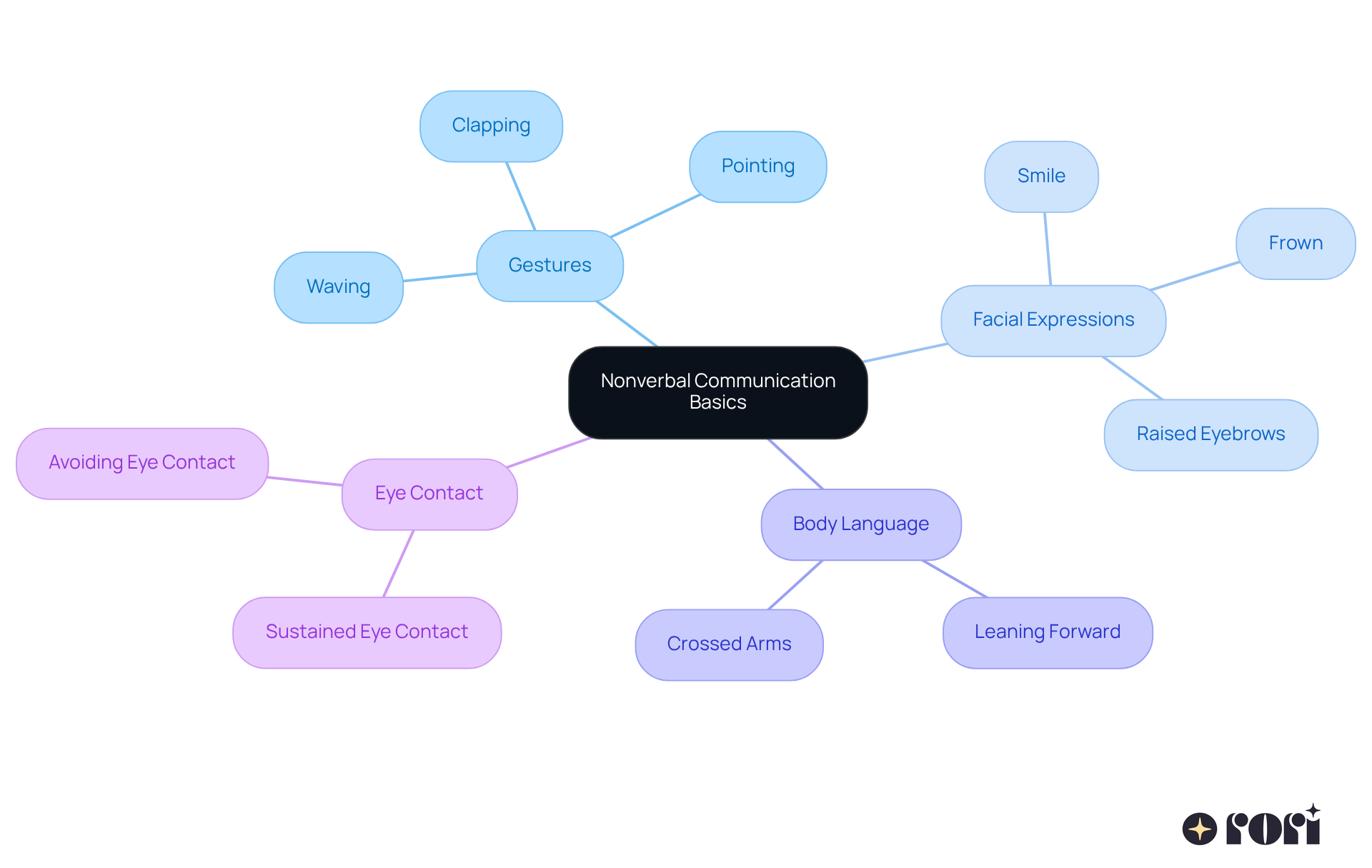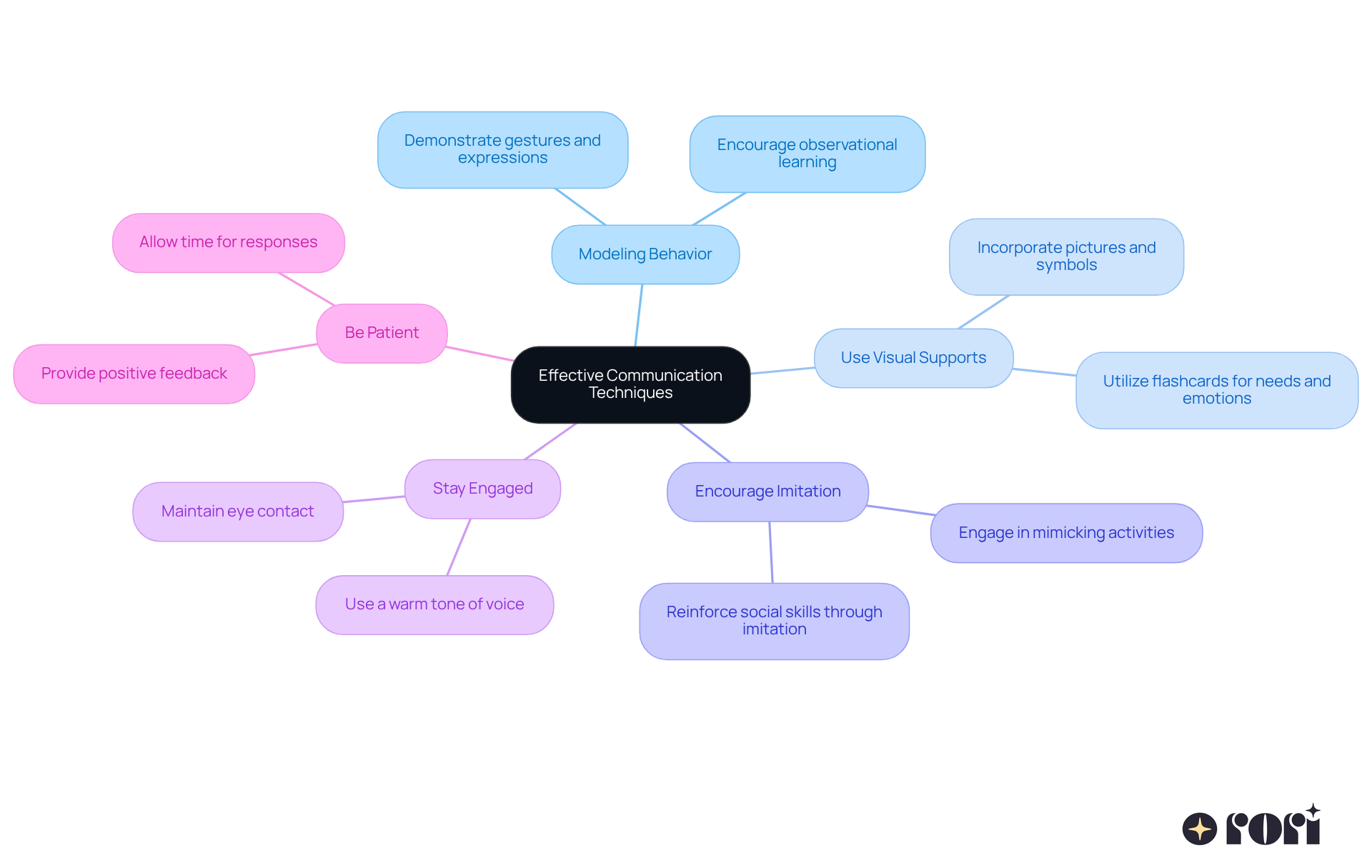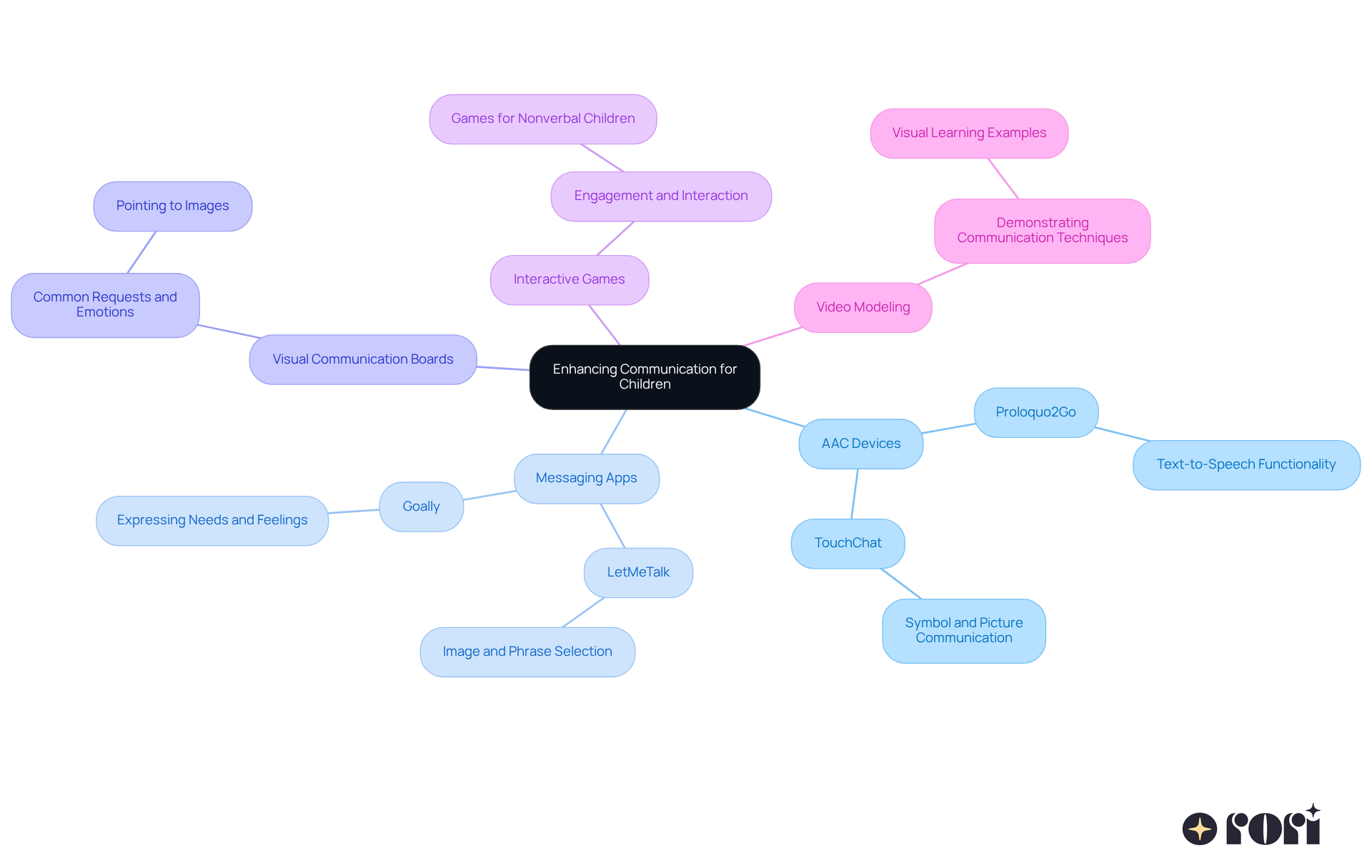This article highlights four essential steps for communicating effectively with a nonverbal 4-year-old. It emphasizes:
These steps draw on principles of Applied Behavior Analysis (ABA) and underscore the significance of gestures, facial expressions, and visual aids in nurturing interaction and comprehension between caregivers and children.
Let’s dive into these steps together! First, recognizing nonverbal cues is crucial. Think about how your little one expresses themselves through their eyes or movements. By paying attention to these signals, you can better understand their needs and feelings.
Next, implementing specific communication techniques can make a world of difference. Simple techniques like using clear gestures or engaging facial expressions can foster connection. Have you tried using visual aids like picture cards? They can be incredibly helpful!
Creating a supportive environment is another vital step. A warm and welcoming space encourages your child to express themselves freely. Consider setting up a cozy corner with their favorite toys or books.
Lastly, technology can be a fantastic ally in this journey. Apps designed for communication can offer additional support and engagement. Remember, you’re not alone in this—many parents are navigating similar challenges.
So, let’s explore these strategies together! Your journey in connecting with your child is important, and we’re here to help you every step of the way!
Understanding a nonverbal 4-year-old can be both a challenge and a rewarding experience for caregivers. Nonverbal communication—those gestures, facial expressions, and body language that convey emotions and needs—becomes the primary mode of expression for these little ones. By mastering effective communication techniques, caregivers can unlock a world of understanding and connection, transforming the way they interact with their children.
So, how can parents bridge the gap between silence and expression? It’s all about ensuring their child feels heard and understood in a world that often prioritizes words. Let’s explore this together! 🌟
Nonverbal communication encompasses a variety of behaviors that convey messages without spoken words. This is particularly vital for a nonverbal 4 year old who may not use verbal communication. Let’s break down some key components:
By carefully observing these nonverbal cues, parents can gain deeper insights into their nonverbal 4 year old's needs and feelings, thereby creating a more responsive and supportive communication environment. This approach aligns beautifully with the principles of Applied Behavior Analysis (ABA) therapy, which emphasizes a patient-centered, adaptable treatment strategy. As parents become more familiar with ABA techniques, they can actively engage in their children's development, leading to better behavioral outcomes.
The advantages of caregiver education, like informed decision-making and enhanced support, empower parents to provide consistent and effective assistance at home. Remember Ralph Waldo Emerson’s wise words: 'Actions speak louder than words.' This highlights the powerful impact of unspoken interactions in understanding and connecting with young individuals. It’s also important to note that a whopping 80% of what we grasp in a conversation is interpreted through body language, not just the words. Techniques like mirroring can nurture connection and understanding, while a simple touch can convey empathy, strengthening the emotional bond between caregivers and those who may not speak.
Let’s explore this together! We’re here to help you every step of the way!

To effectively communicate with your nonverbal child, let’s explore some techniques that are grounded in ABA principles and caregiver education.
These methods not only empower you as a caregiver but also align beautifully with the therapeutic services provided by Rori Care, like group therapy, individual therapy, and caregiver education. Together, we can improve your child’s interaction and social abilities. Let’s take this journey together!

Creating a supportive communication environment for your nonverbal child can be a rewarding journey. Here are some friendly tips to help you along the way:
Let’s explore this together and make the most of these moments!

Let’s explore some wonderful technologies and tools that can help support communication for your little one:
Augmentative and Alternative Communication (AAC) Devices: These handy devices can really make a difference for nonverbal children, allowing them to communicate using symbols, pictures, or even text-to-speech functions! For instance, apps like Proloquo2Go and TouchChat are great options to consider.
Messaging Apps: Have you heard of mobile applications like LetMeTalk and Goally? They can be super helpful for kids, letting them choose images or phrases to express their needs and feelings.
Visual Communication Boards: A fun idea is to create boards filled with images that show common requests or emotions. This way, your child can simply point to what they want to say, making communication easier and more fun!
Interactive Games: Technology-driven games can be a blast! Look for ones that encourage interaction and engagement, especially those that require responses from a nonverbal 4 year old. It’s a playful way to learn communication skills!
Video Modeling: Watching videos that demonstrate communication techniques or social interactions can be incredibly beneficial. They provide visual examples for your child to learn from, making the learning process enjoyable.
Remember, exploring these options can be a great step towards enhancing communication! We’re here to help you every step of the way as you navigate this journey together.

Communicating effectively with a nonverbal 4-year-old is so important for nurturing their development and emotional well-being. By recognizing the significance of nonverbal cues—like gestures, facial expressions, body language, and eye contact—caregivers can create a warm environment that embraces their child's unique communication style. This not only strengthens the bond between caregiver and child but also aligns beautifully with effective strategies grounded in Applied Behavior Analysis (ABA) principles.
The article shares some key insights that can really help enhance communication. Techniques such as:
are all valuable. Creating a supportive atmosphere that minimizes distractions, establishes routines, and fosters emotional safety is crucial, too. Plus, incorporating technology like AAC devices and interactive apps can significantly bridge communication gaps, empowering nonverbal children to express their needs and feelings more effectively. 😊
Ultimately, communicating with a nonverbal child is a journey we take together, filled with patience, understanding, and creativity. By embracing these strategies and valuing nonverbal communication, caregivers can make a significant difference in their child's ability to connect with the world. Let’s take proactive steps today to enhance communication skills and enrich our family dynamics, paving the way for a brighter future filled with connection and understanding. We’re here to help you every step of the way!
What is nonverbal communication?
Nonverbal communication encompasses a variety of behaviors that convey messages without spoken words, including gestures, facial expressions, body language, and eye contact.
Why is nonverbal communication important for a nonverbal 4-year-old?
Nonverbal communication is vital for a nonverbal 4-year-old as it allows them to express their feelings and desires without using verbal language.
What are some examples of gestures that a child might use?
Examples of gestures include waving, pointing, or clapping, which can help a child communicate their needs or emotions.
How do facial expressions contribute to communication?
Facial expressions, such as smiles, frowns, or raised eyebrows, can convey emotions like happiness, sadness, or surprise, helping caregivers understand a child's emotional state.
What does body language indicate in children?
Body language can signal a child's comfort, discomfort, or interest. For instance, leaning forward may indicate engagement, while crossed arms might suggest defensiveness or unease.
What role does eye contact play in communication?
Eye contact can indicate attention or disinterest. Sustained eye contact often builds connection, while avoiding eye contact may suggest a need for space or discomfort.
How can parents better understand their nonverbal child?
By carefully observing nonverbal cues such as gestures, facial expressions, body language, and eye contact, parents can gain insights into their child's needs and feelings.
How does nonverbal communication relate to Applied Behavior Analysis (ABA) therapy?
Nonverbal communication aligns with ABA therapy principles by promoting a patient-centered and adaptable approach, allowing parents to engage actively in their child's development.
What are the benefits of caregiver education in nonverbal communication?
Caregiver education empowers parents to make informed decisions and provide consistent support, leading to better behavioral outcomes for their children.
What percentage of communication is interpreted through body language?
Approximately 80% of what we grasp in a conversation is interpreted through body language, rather than just spoken words.